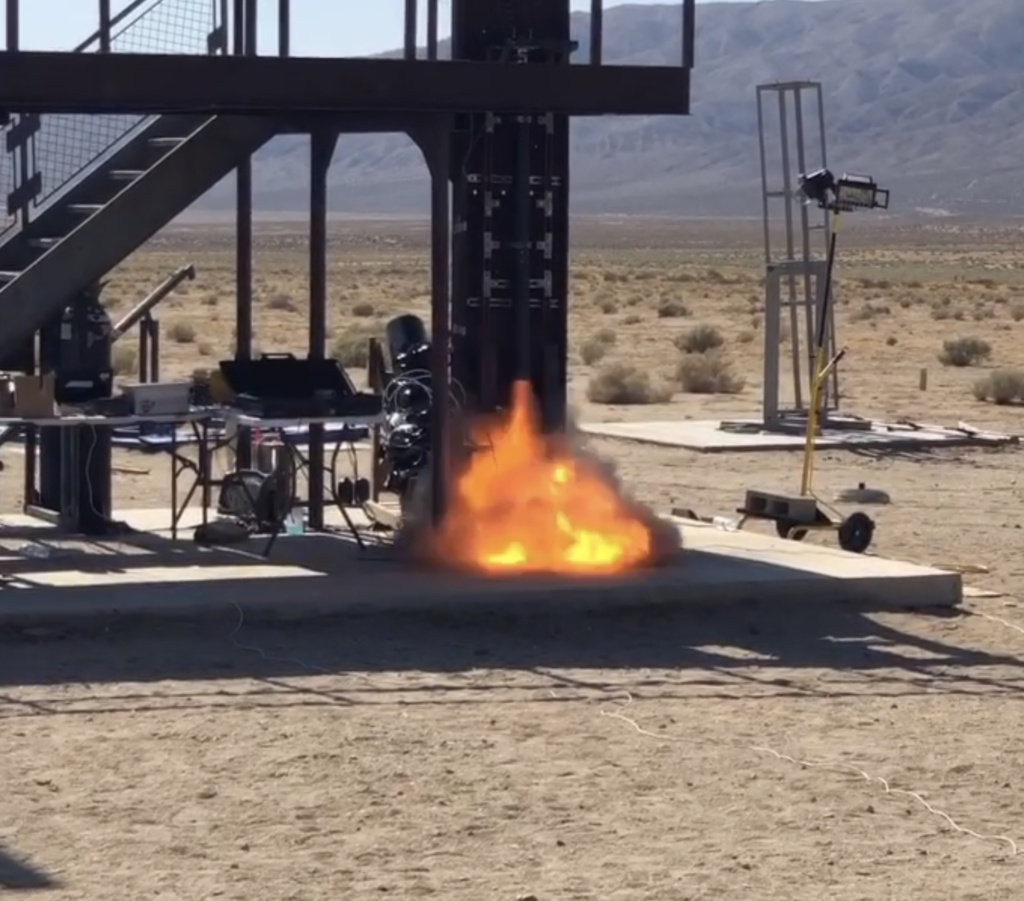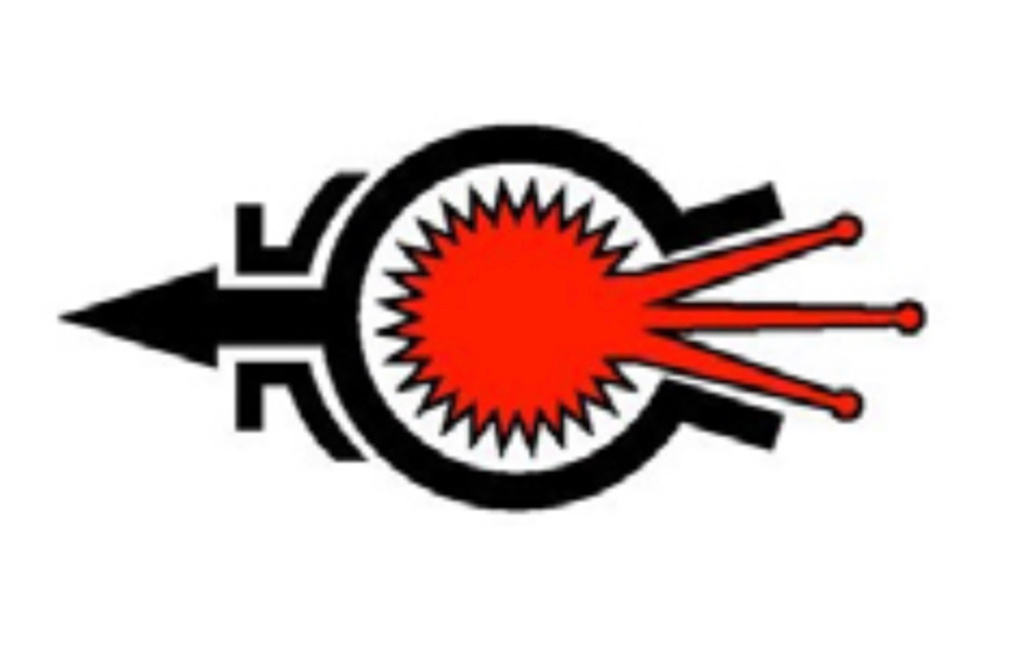by Dave Nordling, Reaction Research Society
The Reaction Research Society held a launch event at the Mojave Test Area mainly to support the UCLA Prometheus team for a static fire test of their high powered hybrid motor. UCLA chose one of the largest nitrous oxide hybrid motor designs, the M1575, made by Contrails Rocketry. Dave Crisalli was the pyrotechnic operator in charge for this event. I was his apprentice for the hybrid static fire.
There were three main activities at this event. The first was the UCLA Rocket Project making their preparations to launch their ethanol and LOX vehicle from the Friends of Amateur Rocketry (FAR) site from the 60-foot rail. FAR is just to the south of the RRS MTA where the UCLA Rocket Project had twice in one day static fired their 750 lbf liquid propellant rocket engine just four weeks earlier on 05-01-2021.
Weather conditions were ideal with winds being nearly still for most of the morning. This makes little difference for the hybrid motor static fire testing at the RRS MTA which was the second project by UCLA. Wind would factor heavily in the flight of the UCLA’s liquid rocket.
The third planned activity for UCLA was a series of model rocket flights from several high school teams mentored by UCLA graduate and undergraduate students. Still winds made for easier recovery of the first rockets launched that day.



UCLA at the end of each Spring Quarter conducts a launch event where student groups build small rockets with egg payloads using single and dual-stage vehicles with model rocket class motors (G and under). UCLA graduate students and Professor Mitchell Spearrin were leading this event.
It is good experience for beginners and experts alike to build and fly model rockets., The RRS has it’s own such internal program called the Yoerg Challenge which is to motivate all members to build and fly a model rocket kit at least once from the RRS MTA. The RRS is known as an experimental society and not limited to the model rocket code, but we are also fully supportive of all forms of propulsion as long as it is safely conducted and compliant to the regulations set by the state of California.
As the UCLA hybrid rocket team was making their system checks, they discovered a problem in their nitrous filling system and valve commands. During this diagnostic period, some of the RRS members went to the nearby FAR site to see how the UCLA liquid rocket preparations were progressing.






Some of the RRS members remained at the FAR site to witness the launch. After two years of design, planning, build and world pandemic, the UCLA team liquid rocket launch was an amazing success. Due to the relatively low winds that day under clear skies, recovery was made just under a mile away. Preliminary data from telemetry confirmed a new university team altitude record of 22,000 feet. It was an amazing sight to witness from the observation bunker at the RRS MTA.

The UCLA Prometheus team had corrected their initial electrical problem and began the series of procedural checks to familiarize the new members of the hybrid rocket team. Some minor adjustments of the motor mount alignment was necessary before getting into test.






The hybrid motor firing proceeded without further problems and resulted in a spectacular test meeting expected performance. Continuous thrust levels over 600 lbf were recorded but data analysis is still ongoing.


The team had a second hybrid motor grain ready for another firing so they proceeded with disassembly and inspection of the parts. The floating injector seals were still in good condition but the graphite nozzle having survived many prior hot fire tests did not survive that day’s test. Although the throat was in good condition, the inlet taper had cracked requiring a replacement the team did not have.





UCLA Prometheus was pleased with the results from the single firing and will proceed with integrating the motor into their flight vehicle for a launch from FAR on June 19, 2021. The RRS will hold an event at the Mojave Test Area on this same Saturday for member projects and will observe the flight from our northern vantage point.

In the last hours of the day, after most of the UCLA liquid and hybrid teams had cleared the area, packaged and carried away their trash, packed their equipment and departed the RRS MTA and FAR sites. The UCLA avionics team remained at the MTA to conduct another series of tests on the GPS tracking system. The society was glad to support this diligence which will help assure success in one of the most important aspects of rocketry which is data acquisition from telemetry. If there is no data, it didn’t happen.
For any group interested in using the RRS MTA for their propulsion related projects, download one of our Standard Record Forms from our RRS.ORG website and submit this request to the RRS president. The society has had a long relationship with UCLA and USC, but we are also supportive to any amateur, professional or academic groups wanting to learn from test.
president@rrs.org
























